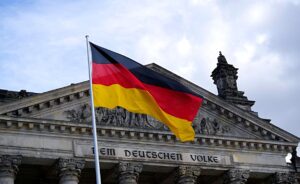
In 2025, Germany’s economy continues to face serious challenges. After two consecutive years of GDP decline (0.3% in 2023 and 0.2% in 2024), the current year is characterized by stagnation, with GDP growth forecast at 0.0%. This makes Germany the only G7 country that has not shown economic growth in the last three years.
The new government led by Chancellor Friedrich Merz, who is due to take office on May 6, is expected to present a package of measures to stimulate the economy. These include
Economists predict a moderate recovery of the German economy in 2026 with GDP growth of around 1.0%. However, the successful implementation of these forecasts will depend on the new government’s ability to effectively address internal and external challenges.
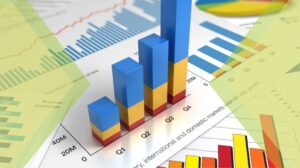
In January-March 2025, the real gross domestic product (GDP) of Ukraine grew by 1.1% compared to the same period in 2024, according to the Monthly Economic Monitoring of the Institute for Economic Research and Policy Consulting (IER).
“The indicators for GDP, industry, construction and a number of other sectors of the economy published by the State Statistics Service allowed the IER experts to refine the estimate of real GDP growth in the first quarter of 2025. According to our estimates, real GDP grew by 1.2% in January and 0.7% in February,” the IER press service said on Tuesday.
It is noted that better access to electricity in March and a gradual increase in demand were the main reasons for a certain improvement in the economic situation in March. According to the IER, real GDP grew by 1.3% in March.
Value added in agriculture declined by about 3% y-o-y in March, which is in line with the revised estimate for February. The IER explained that this was mainly due to a decline in livestock production in households. As before, the advance of Russian troops led to a decrease in production near the front line.
“According to our estimates, real gross value added (GVA) in industry grew by 2.5% yoy in March, slightly faster than the revised 1.8% in February. Moderate growth in domestic demand and exports supported the increase in production, although Russian attacks continued to have a negative impact on economic activity. For example, in March, attacks on such major cities as Dnipro, Kryvyi Rih, and Kharkiv intensified,” the Institute added.
Production in the mining industry in March, according to the IER, decreased by more than 3% compared to March 2024, primarily due to the temporary occupation of several coal mines in Donetsk region by Russian troops and attacks on gas production. Real GVA in the electricity sector decreased by almost 5%, due to Russian attacks.
The IER emphasized that it also revised its estimate of growth in trade to 0.7% in February (compared to February-2024). The organization hopes that in March, growth will remain close to the same level – 1.2%.
“This will continue to reflect the trend of increasing the share of direct sales in trade, which leads to a decrease in wholesale turnover. According to our estimates, real GVA in transportation in March declined by 6%, which is close to our revised estimate for February. A deeper slowdown in rail freight transportation due to cyberattacks offset slightly faster growth in other transportation segments. The impact of the suspension of gas transit also remained,” the IER emphasized.
As for inflation, the IER estimates its growth at 14.6% yoy in March compared to 13.4% in February. One of the main factors behind this acceleration was a 45% increase in average egg prices compared to the low base of last year, while in February prices were close to last year’s levels (2% higher than in the previous year). However, inflationary pressures were also supported by traditional factors, such as rising labor costs, higher costs of stable energy supplies, last year’s poor harvest, and the approximation of domestic prices for a number of agricultural products to world prices (due to the removal of export barriers that previously kept domestic prices lower).
As reported, the NBU has downgraded its forecast for Ukraine’s economic growth this year to 3.1% from 3.6% in its previous January macroeconomic forecast, next year from 4.0% to 3.7%, and in 2027 from 4.2% to 3.9%.
According to First Deputy Prime Minister and Minister of Economy Yulia Svyrydenko on March 18, gross domestic product (GDP) growth in January-February 2025 is estimated at 1.1%.
Earlier, on February 28, the International Monetary Fund (IMF) downgraded its forecast for Ukraine’s economic growth in 2025, lowering it by 0.5 percentage points (p.p.) from its previous forecast to 2-3%. Also, the European Bank for Reconstruction and Development (EBRD) has downgraded its forecasts for Ukrainian GDP growth in 2025 from 4.7% to 3.5%, the World Bank from 6.5% to 2%, and the National Bank of Ukraine from 4.1% to 3.6%, but the state budget for 2025 is based on a 2.7% GDP growth forecast.
In addition, ICU Investment Group has lowered its forecast for Ukraine’s GDP growth from 3.4% to 3% in 2025.

The Index of Economic Expectations of Investors and Analysts in Germany for the next six months, calculated by the ZEW Research Institute, fell to the lowest since July 2023 of minus 14 points in April from the highest since February 2022 of 51.6 points a month earlier. This is the most significant drop since March 2022. Analysts on average expected it to decline to 9.5 points in April, according to Trading Economics.
“Global uncertainty has increased dramatically, not only because of the possible effects of the [US] mirror duties on world trade, but also because of the dynamic nature of their changes,” said ZEW President Achim Wambach. ”This is especially affecting export-intensive industries such as the automotive and chemical industries, as well as the production of metals, machinery and steel, which have recently seen significant improvements.
Meanwhile, the indicator of attitudes toward the current situation in Germany increased to minus 81.2 points this month from minus 87.6 points in March.
In the eurozone, the index of economic expectations in April fell to the lowest since December 2022, minus 18.5 points from 39.8 points a month earlier. The experts’ forecast for this indicator was 14.2 points.
The indicator for assessing the current economic situation in the currency bloc decreased by 5.7 percentage points to minus 50.9 points.
Source: http://relocation.com.ua/index-ekonomichnyh-ochikuvan-investoriv/
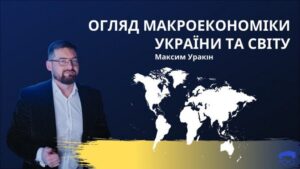
The article presents key macroeconomic indicators of Ukraine and the world economy for January-December 2024. The analysis is based on official data from the State Statistics Service of Ukraine, the National Bank of Ukraine, the IMF, the World Bank, and the United Nations, on the basis of which Maksim Urakin, PhD in Economics, founder of the Experts Club information and analytical center, presented an analysis of macroeconomic trends in Ukraine and the world. Such key aspects as the dynamics of gross domestic product (GDP), inflation, unemployment, foreign trade and public debt of Ukraine, as well as global macroeconomic trends were considered.
Ukraine’s macroeconomic performance
Ukraine’s economy showed moderate growth in 2024 despite ongoing challenges related to war and external economic factors. According to the State Statistics Service of Ukraine, the country’s real GDP grew by 2.9% year-on-year . Nominal GDP amounted to UAH 7.66 trillion, with a deflator at 12.3%.
“Despite the challenges associated with the war and unstable geopolitical situation, Ukraine has managed to hold macroeconomic stability. GDP growth of 2.9% is a signal of economic recovery and investor confidence,” Maksim Urakin noted.
Inflation remains a significant problem for the economy. According to the State Statistics Service of Ukraine, annual inflation reached 12% in December 2024, accelerating from 11.2% in November . Consumer prices rose by 1.4% in December compared to November.
“The rise in inflation is a worrying signal. It is the result not only of internal factors, but also of external pressures: rising import prices, energy risks, as well as exchange rate fluctuations. The policy of the National Bank will play a crucial role in stabilizing the situation,” the expert explained.
The negative balance of foreign trade in goods in January-November 2024 increased by 3.6% compared to the same period of 2023, reaching $25.239 billion . Exports rose 16.5% to $38.423 billion and imports rose 11% to $63.662 billion.
“The increase in the negative trade balance suggests that imports are outpacing exports. Ukraine should focus on expanding its export potential and supporting strategic industries: agro-industrial complex, IT and machine building,” Urakin emphasized.
Ukraine’s international reserves reached $43.788 billion as of January 1, 2025, having increased by 9.7% in December.
“This is a positive signal. Reserves are growing due to receipts from international partners. This ensures macro-financial stability and stability of the hryvnia,” the expert said.
Global economy
According to IMF forecasts, global economic growth in 2024 amounted to 3.2% . However, geopolitical instability, trade wars and slowing growth in key economies continue to put pressure on the outlook.
“The global economy is recovering but remains vulnerable. Geopolitical risks, high interest rates and lower consumer demand in developed countries are the main factors of instability,” said Urakin.
The U.S. economy showed stable growth. According to the US Bureau of Economic Analysis, the country’s GDP grew by 2.4% year-on-year in the fourth quarter of 2024, helped by a rise in consumer spending
“Strong domestic demand is a driver of the U.S. economy. However, rising debt burdens and expensive credit could slow the momentum in 2025,” the economist said.
The Eurozone economy showed weak growth rates. In the fourth quarter of 2024, Eurozone GDP grew by 0.1% quarter-on-quarter .
India continues to show stable growth. According to the Indian government, the country’s GDP grew by 8.2% in 2024.
China’s economy grew 4.6% in the third quarter of 2024, but the forecast for the year was lowered to 4.8% due to weak domestic demand and difficulties in the real estate sector.
“China needs to restart domestic consumption. Without demand stimulus, growth may slow down even more,” the expert emphasized.
Conclusion
Economic indicators of Ukraine and the world for 2024 show a mixed picture. GDP growth and positive signals in global markets are combined with inflation risks and foreign trade imbalances. The global economy is also under pressure from multiple uncertainties.
“For Ukraine, the key challenges remain structural reforms, increasing exports, modernizing infrastructure and actively attracting investment. This is the key to sustainable economic growth in 2025 and beyond,” summarized Maksim Urakin.
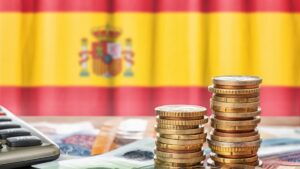
The Spanish economy grew by 0.8% in the fourth quarter of 2024 compared to the previous three months, according to the national statistics agency INE, which presented the final data. The figure coincided with the previous estimate and with the growth rate in the third quarter.
Consumer spending in Spain in October-December increased by 1% compared to the previous quarter, government spending increased by 0.3%, and business investment by 2.9%. Exports of goods and services increased by 0.1%, imports by 1.4%.
The industrial sector recorded an increase in production by 0.3%, the construction sector by 2.7%, and the services sector by 1%.
In annual terms, Spain’s GDP grew by 3.4%, while previously it was reported to have risen by 3.5%. At the end of 2024, according to the final data, the Spanish economy grew by 3.2%, this data was confirmed.
Source: http://relocation.com.ua/spains-economy-grew-by-only-08/
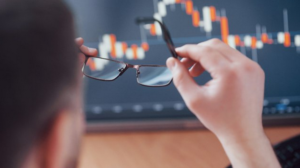
The article presents key macroeconomic indicators of Ukraine and the global economy in January-November 2024. The analysis is based on official data from the State Statistics Service of Ukraine, the National Bank of Ukraine, the IMF, the World Bank, and the United Nations, on the basis of which Maksim Urakin, PhD in Economics, founder of the Experts Club Information and Analytical Center, presented an analysis of macroeconomic trends in Ukraine and the world. The key aspects of the report include the dynamics of gross domestic product (GDP), inflation, unemployment, foreign trade and public debt of Ukraine, as well as global macroeconomic trends.
Macroeconomic indicators of Ukraine
In 2024, Ukraine’s economy demonstrated moderate growth despite the ongoing challenges posed by the war and external economic factors. According to the Ministry of Economy of Ukraine, the country’s gross domestic product grew by 4.2% year-on-year in January-October 2024. In October, growth was 1.3% year-on-year. The main drivers of growth were construction, transportation, and manufacturing.
However, inflation remains a significant challenge for the economy. According to the State Statistics Service of Ukraine, annual inflation reached 12% in December 2024, accelerating from 8.6% in September. Consumer prices in December increased by 1.4% compared to November, when they grew by 1.9%.
“Inflation creates a significant burden on households and businesses. Combating price pressure requires thoughtful steps in monetary and fiscal policy,” Urakin emphasized.
The negative balance of foreign trade in goods in January-November 2024 increased by 3.6% compared to the same period in 2023, reaching $25.239 billion.
“This indicates high imports and insufficient export growth. It is necessary to strengthen support for exporters and develop strategically important industries to improve the trade balance,” said Maksim Urakin.
Ukraine’s international reserves increased by $3.863 billion or 9.7% in December and amounted to $43.788 billion as of January 1, 2025, according to preliminary data.
“The growth of reserves is due to the receipt of foreign currency from international partners, which in December exceeded the net sale of foreign currency by the National Bank and the country’s payments on foreign debts,” Maksim Urakin emphasized.
Global economy
Global economic activity remains heterogeneous. According to the International Monetary Fund, global economic growth in 2024 will be 3.1%. However, geopolitical instability, high interest rates, and slowing growth in key economies continue to weigh on the outlook.
The US economy is showing steady growth thanks to strong domestic demand. According to the US Bureau of Economic Analysis, the country’s GDP grew by 2.8% in the third quarter of 2024, driven by a 3.7% increase in consumer spending. The unemployment rate remained at 3.6%, indicating stability in the labor market. At the same time, inflation, although declining from its peak, remains at 3.9% year-on-year.
“The US economy remains the engine of global growth, but high interest rates and government spending cuts may slow its pace in 2025,” Urakin said.
The EU economy is showing weak growth rates. The forecast for 2024 has been lowered to 0.9%, and for the Eurozone countries – to 0.8%. Germany, the largest economy in the region, is under pressure due to the weakness of the industrial sector, where production fell by 1.2% year-on-year. Inflation in the Eurozone slowed to 4.2%, allowing the European Central Bank to consider easing monetary policy in 2025.
“The EU economy is facing a number of challenges, including the energy crisis and weakening external demand. These factors limit the potential for recovery,” Urakin emphasized.
India continues to demonstrate stable growth, remaining one of the fastest growing economies in the world. According to the Indian government, the country’s GDP will grow by 7% in 2024. The main growth drivers are the IT sector, industrial production and agriculture. Inflation remains under control at 5.2%, which allows the Reserve Bank of India to keep the key policy rate unchanged.
“India is strengthening its position as a global economic leader. Its steady growth and reforms in key sectors continue to attract significant investment,” Urakin said.
China’s economy grew by 4.6% in the third quarter of 2024, but the forecast for the year was lowered to 4.8% due to weak domestic demand and difficulties in the real estate sector. Corporate debt problems and slowing export growth continue to weigh on the economy.
“China is facing challenges that may limit its role in the global recovery. However, the measures taken to support the economy should reduce these risks,” Urakin added.
Economic indicators for Ukraine and the world in 2024 show a contradictory picture. GDP growth and positive signals from global markets are combined with inflationary risks and foreign trade imbalances. The global economy is also under pressure from many uncertainties.
“It is important for Ukraine to focus on structural reforms that stimulate export growth and attract foreign investment. Only sustainable development of key industries can ensure long-term economic stability,” summarized Maksim Urakin.
You can learn more about Ukraine’s foreign trade in 2024 in the video: https://www.youtube.com/watch?v=tFxad1mplE0&t
You can subscribe to the Experts Club channel here: https://www.youtube.com/@ExpertsClub